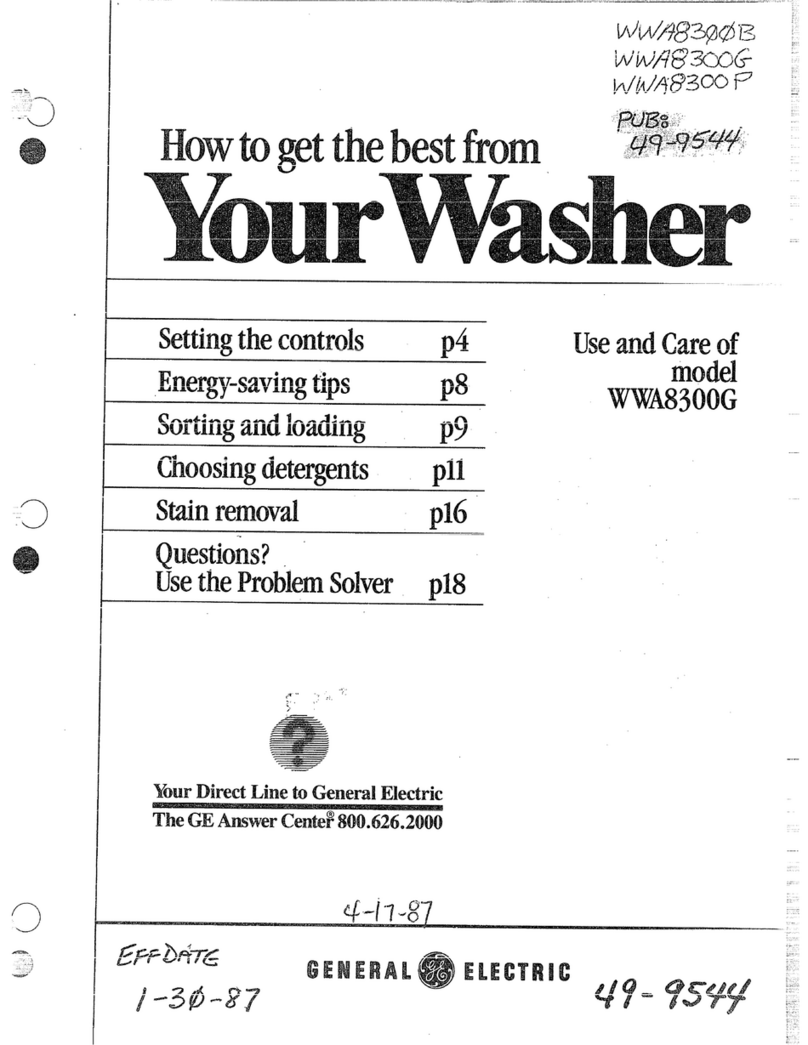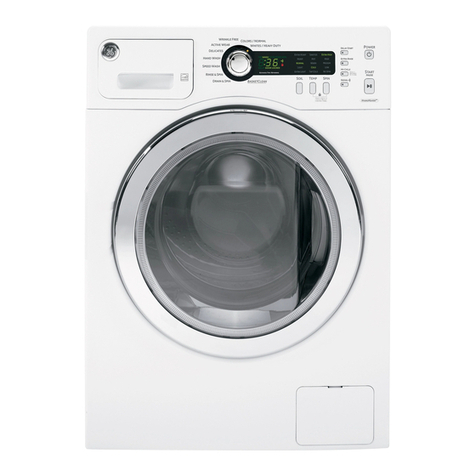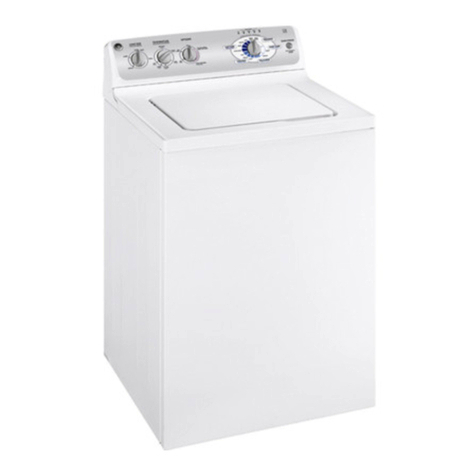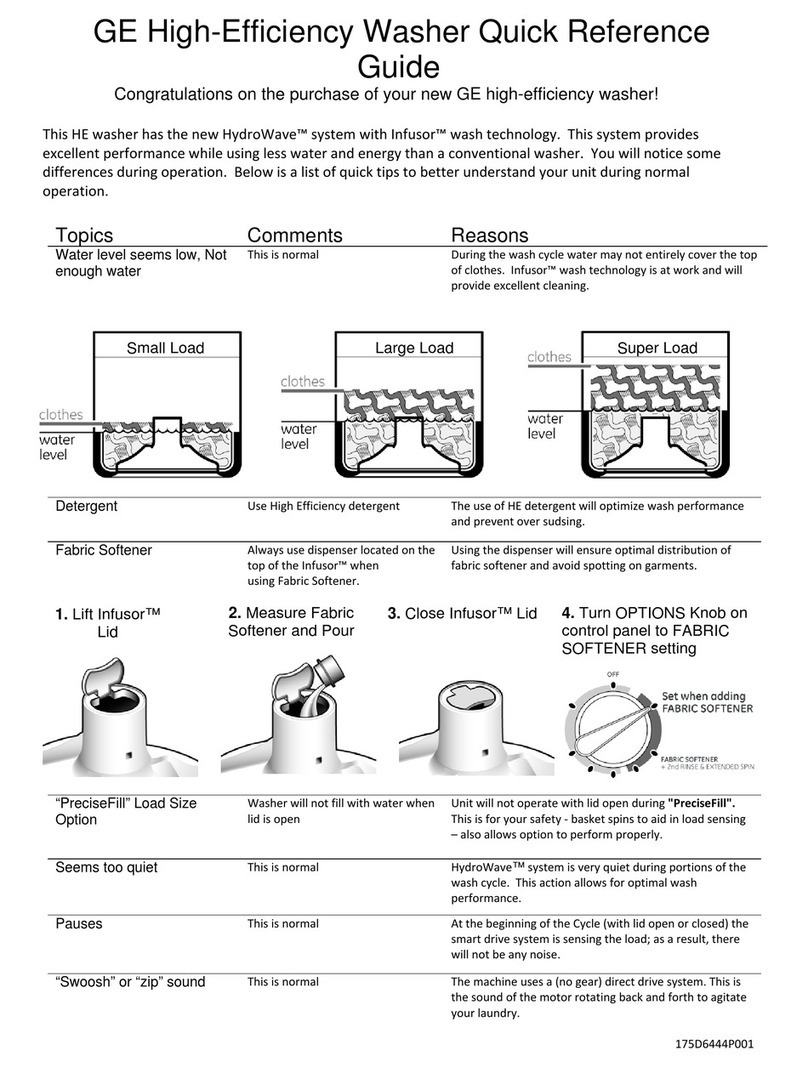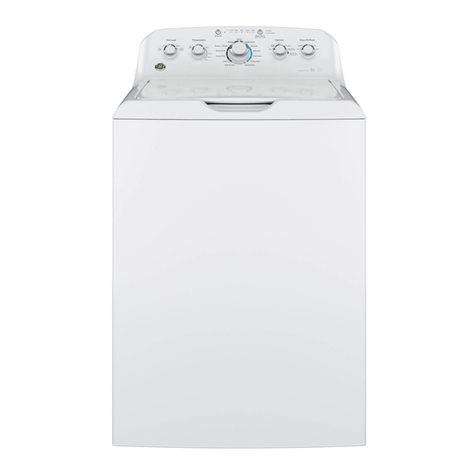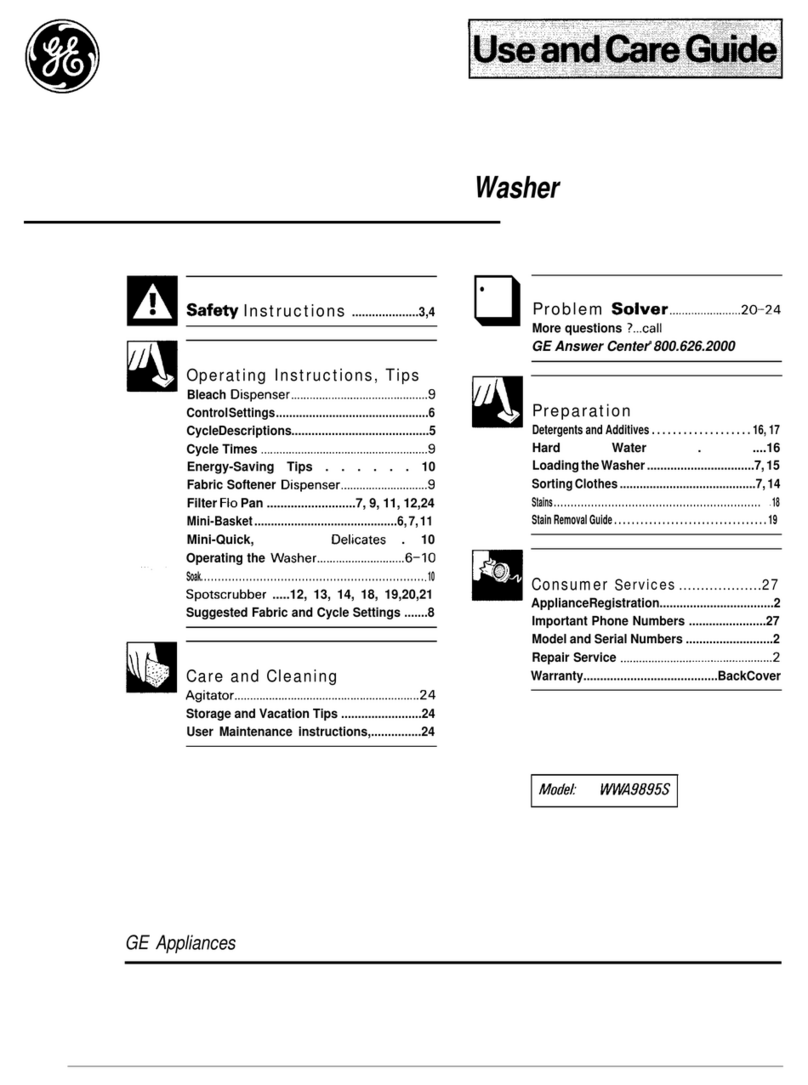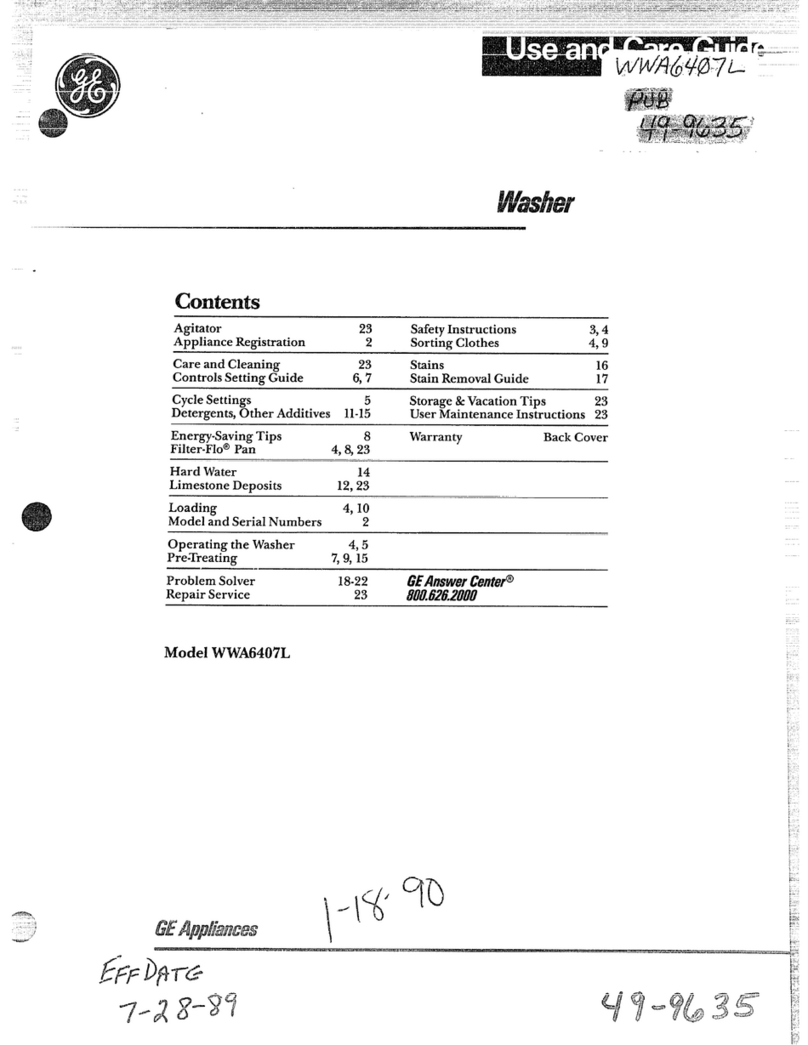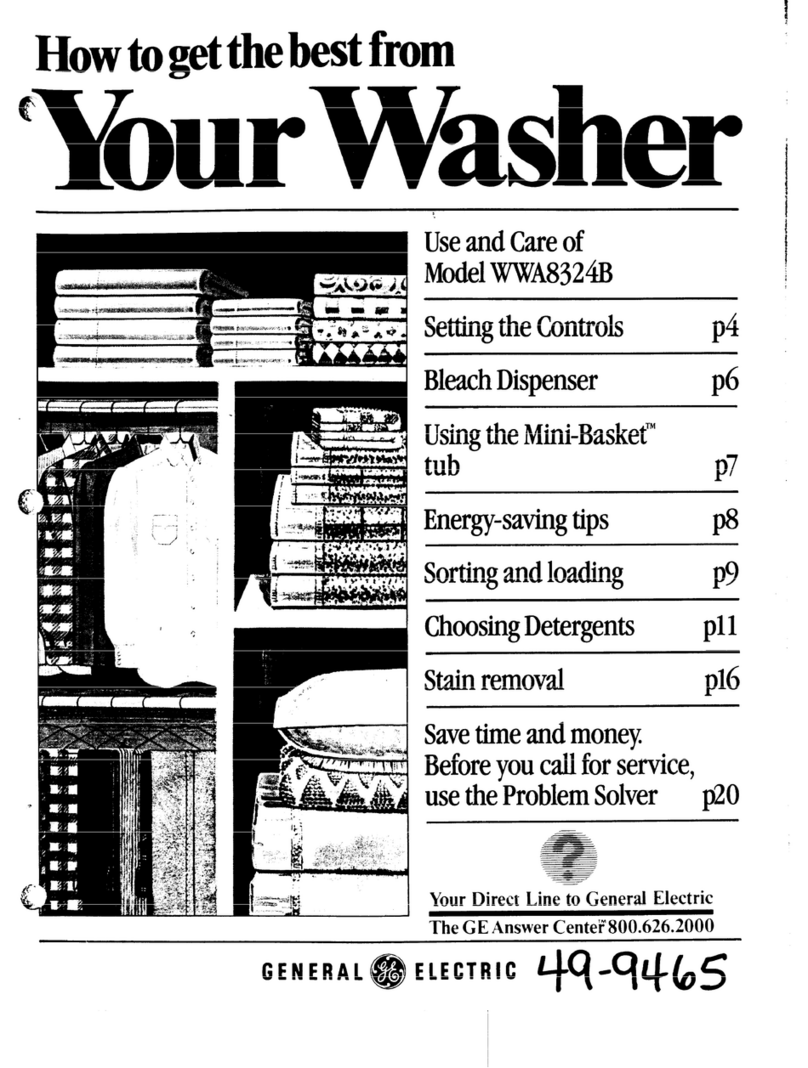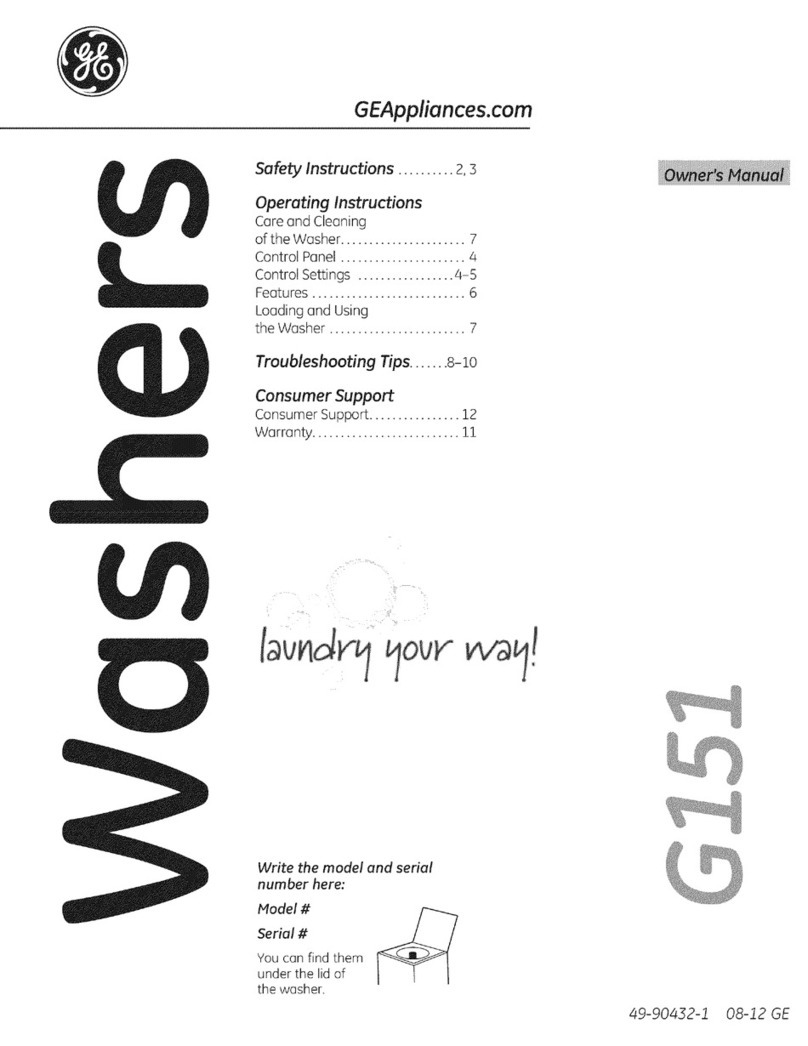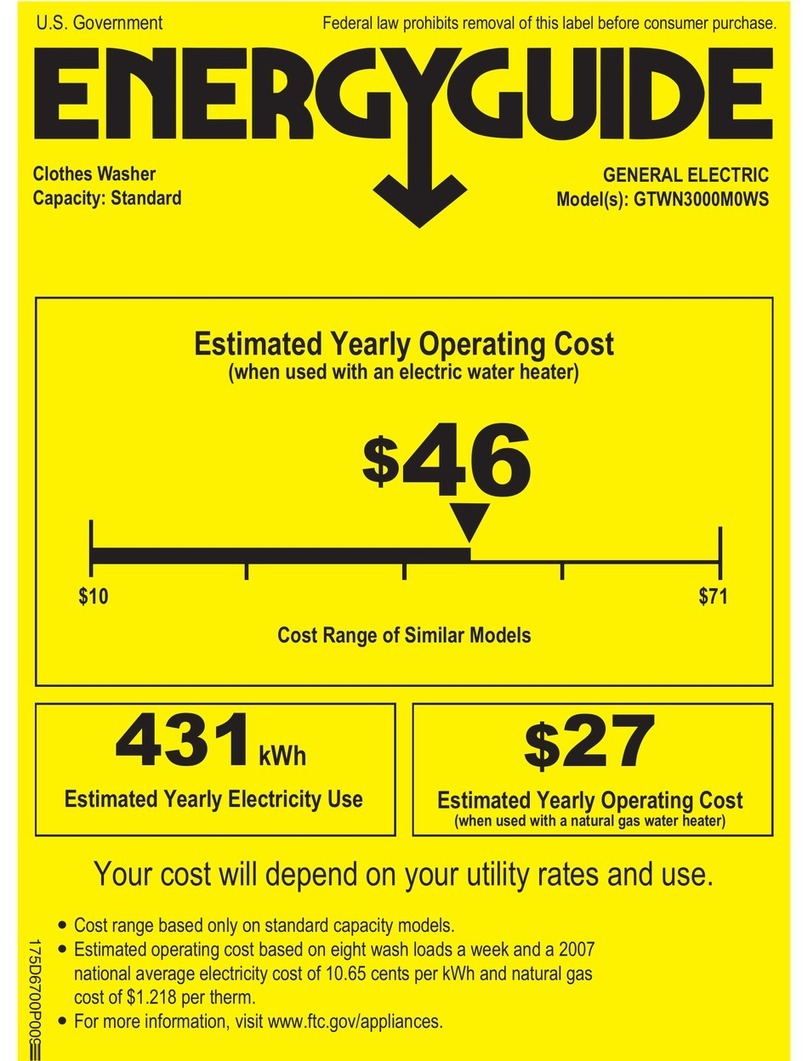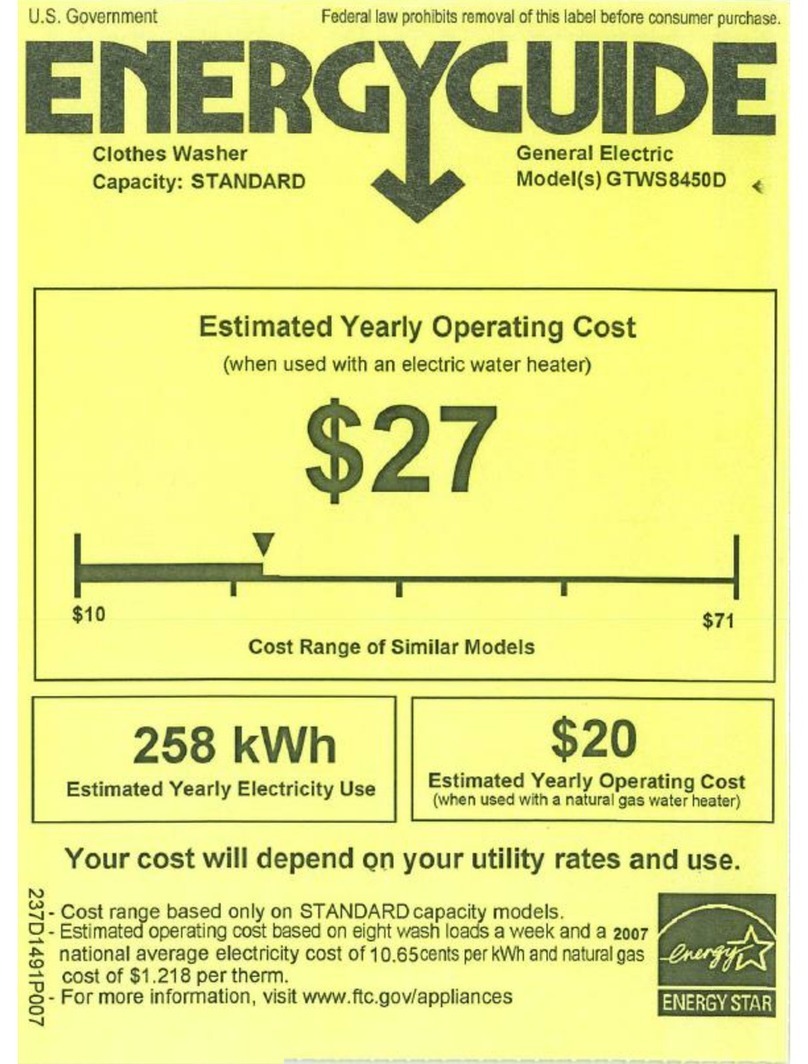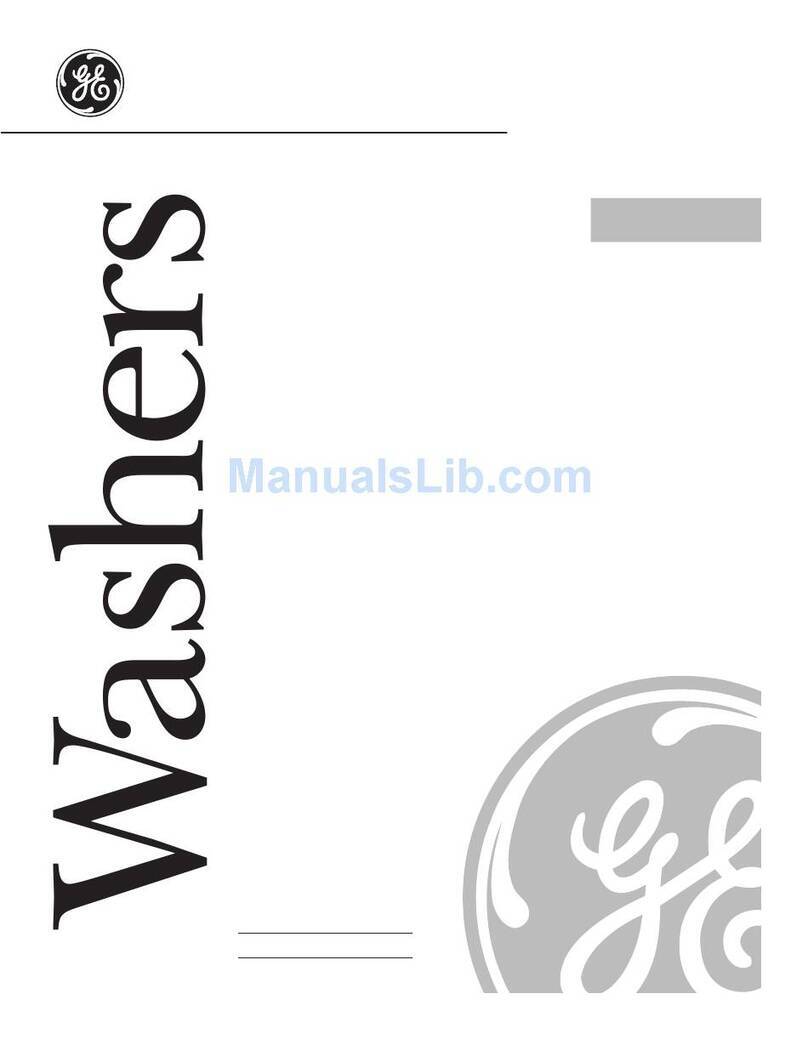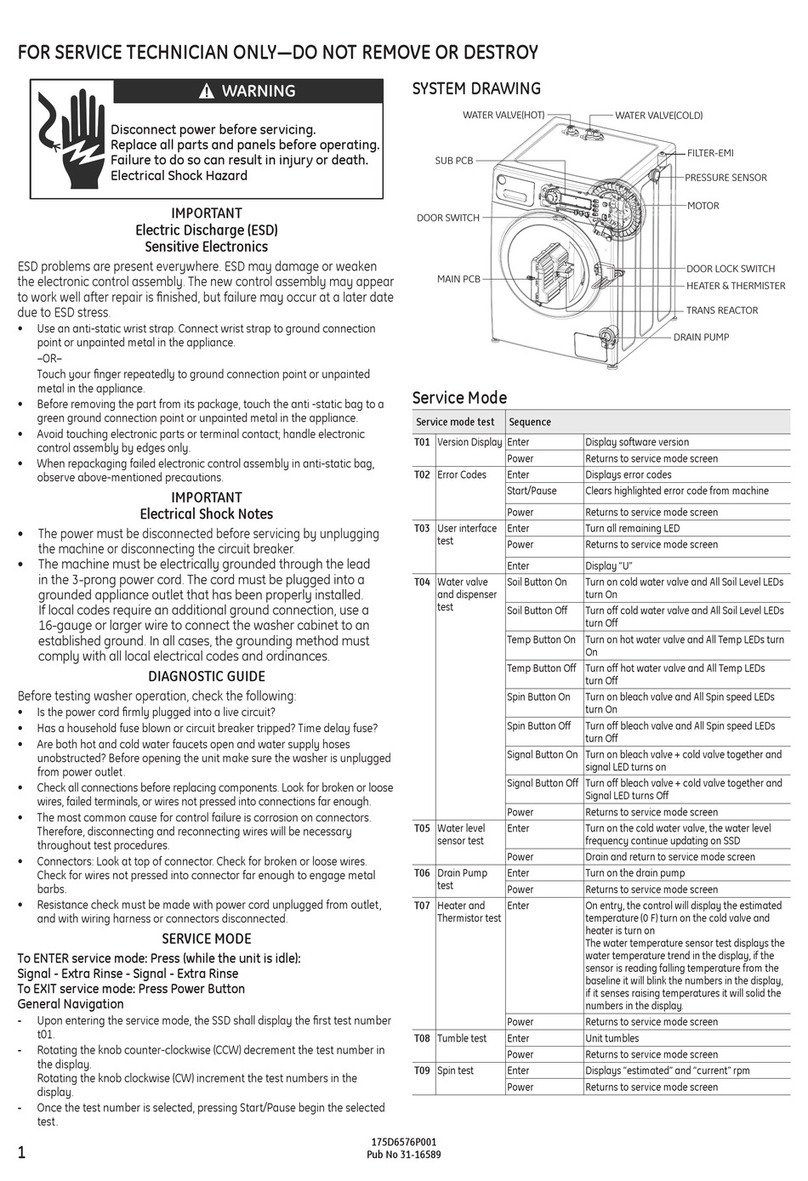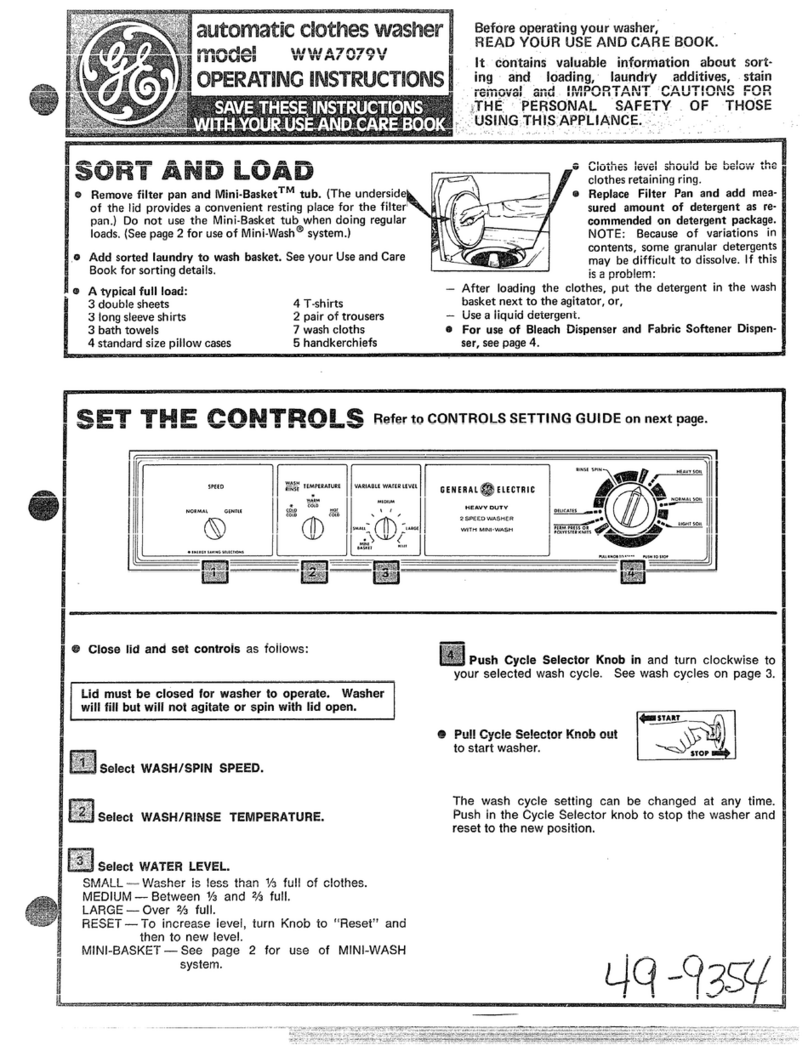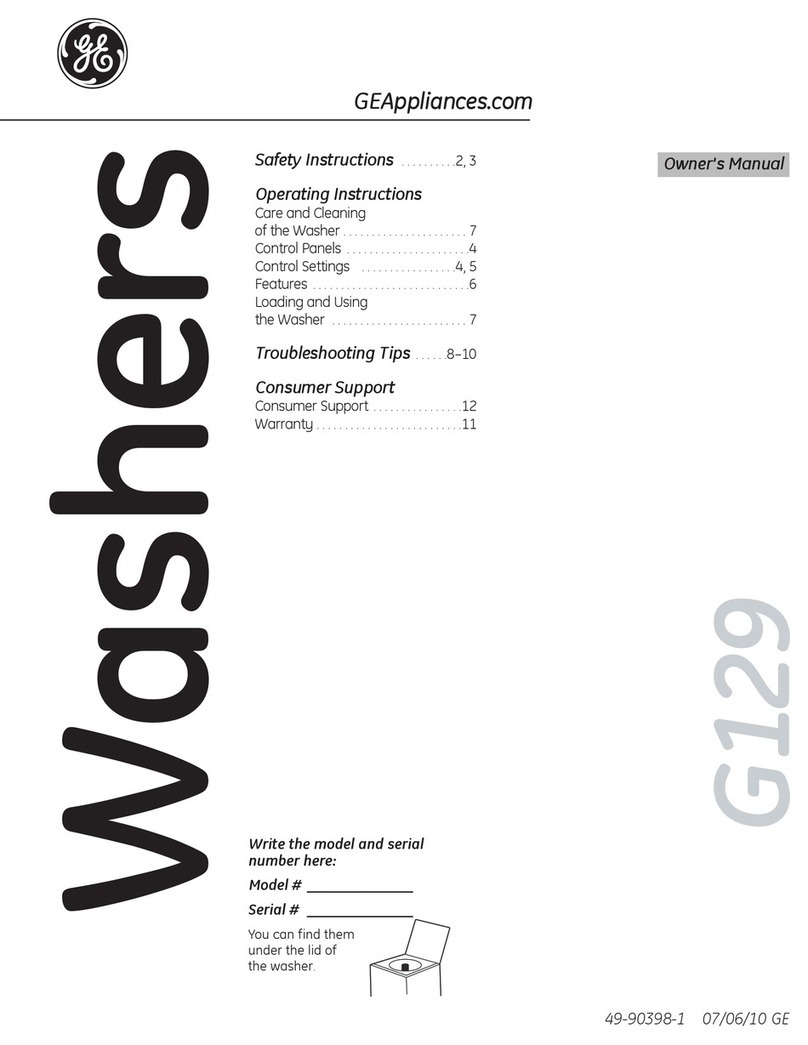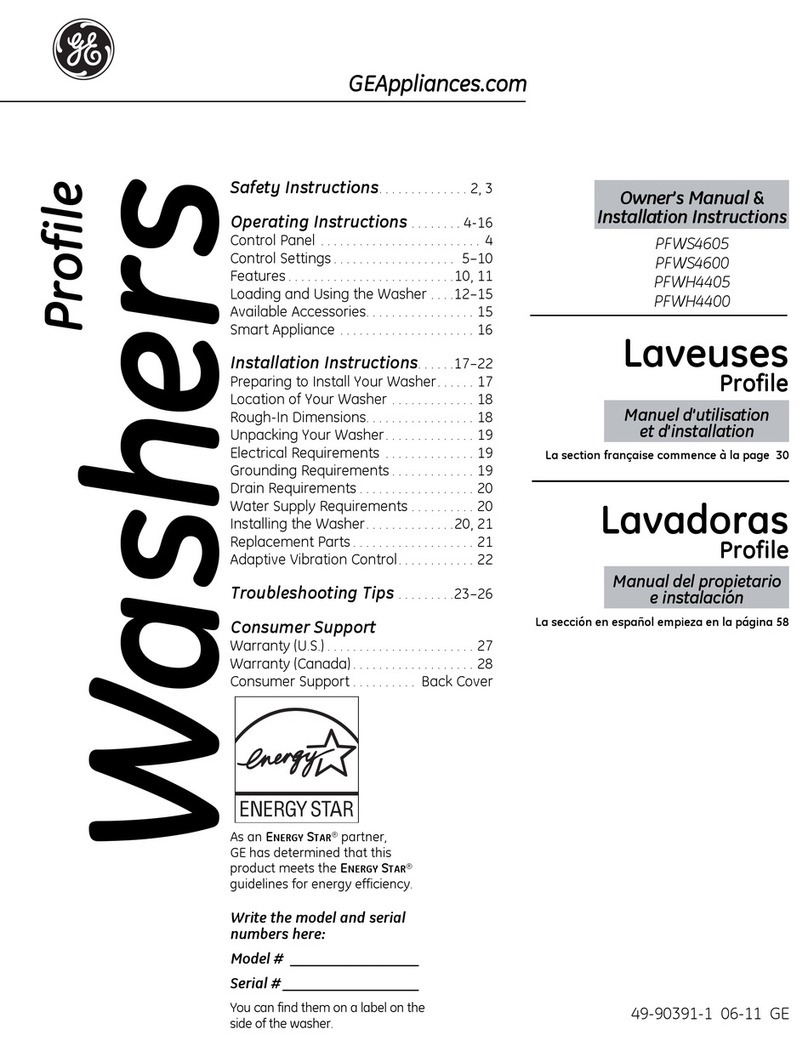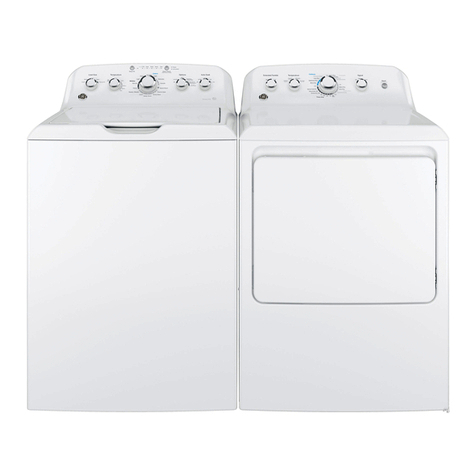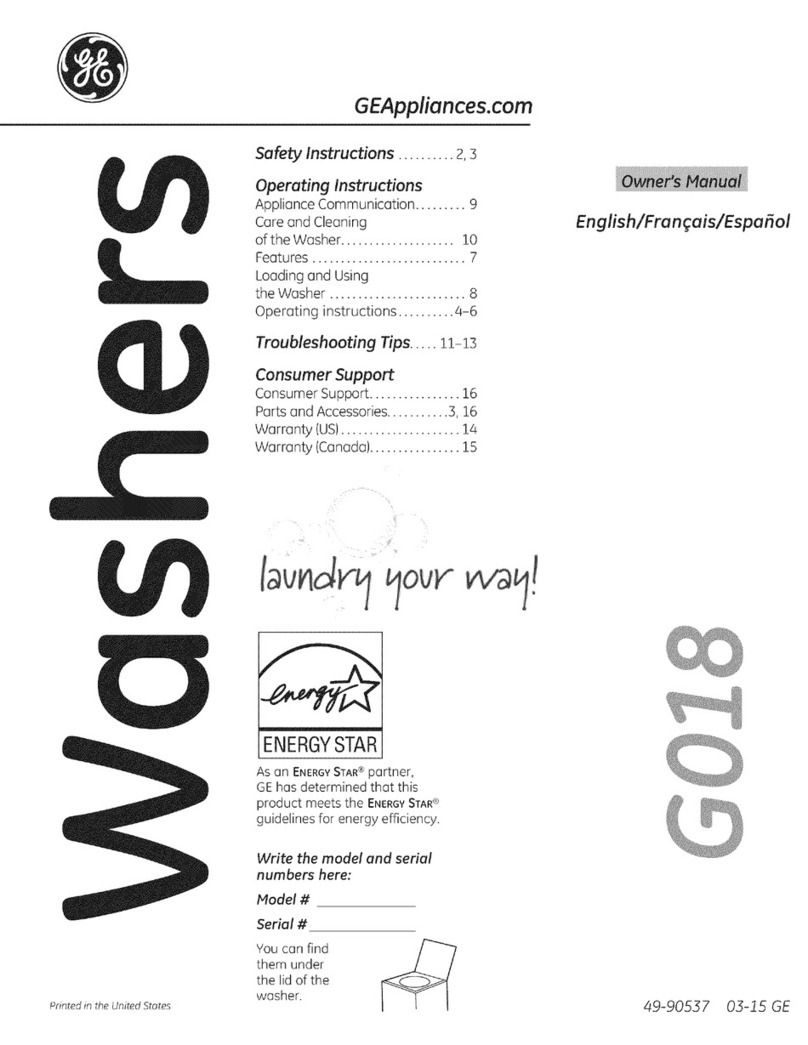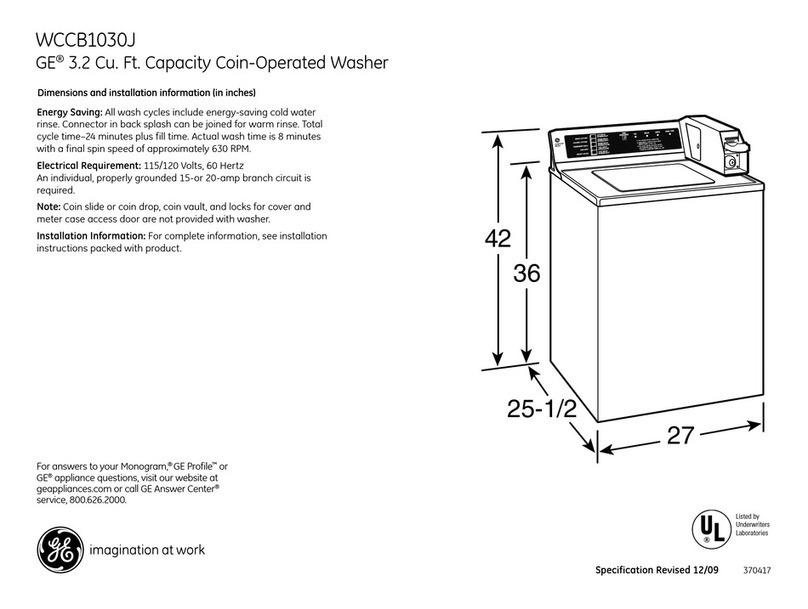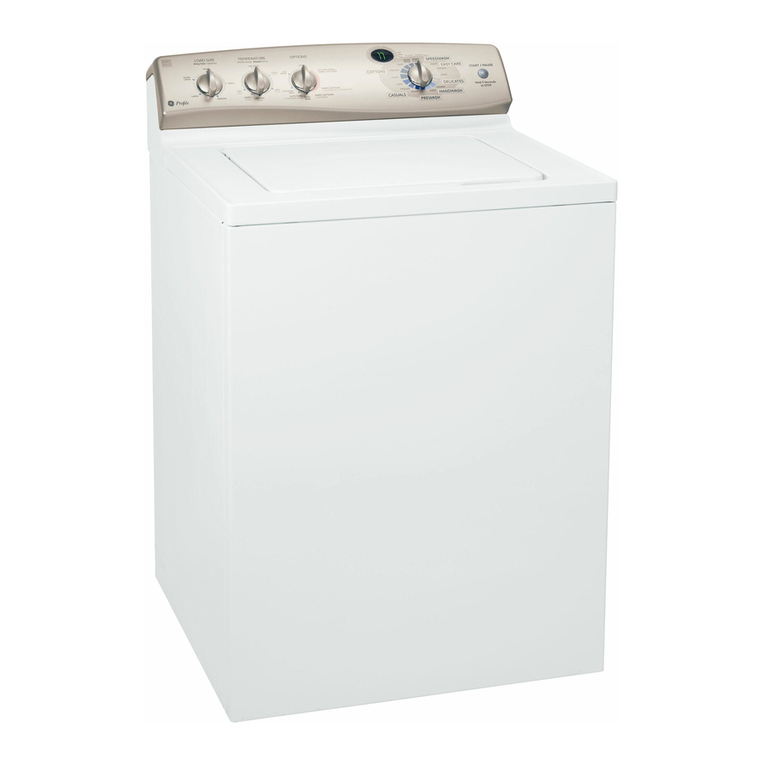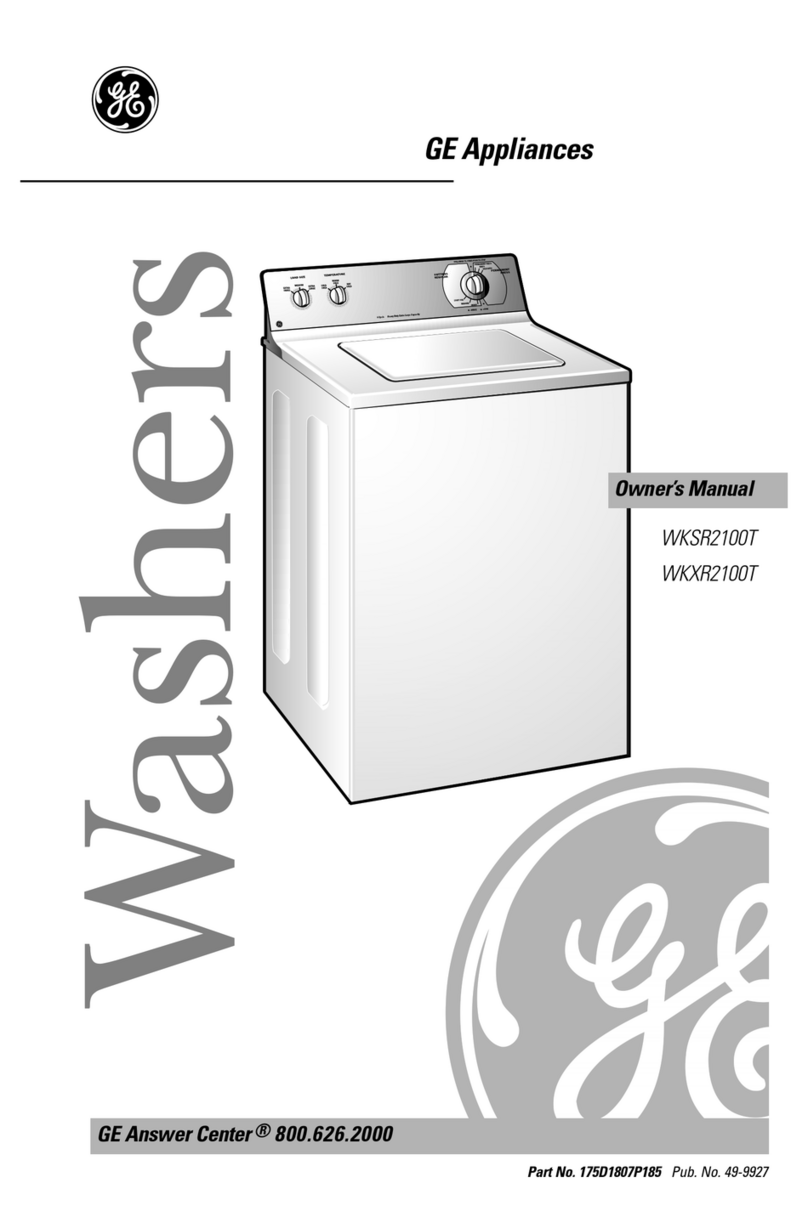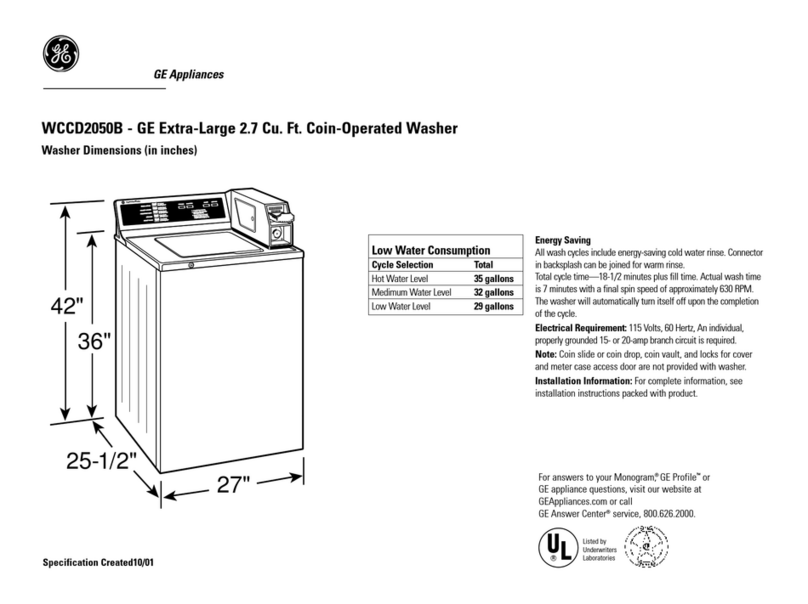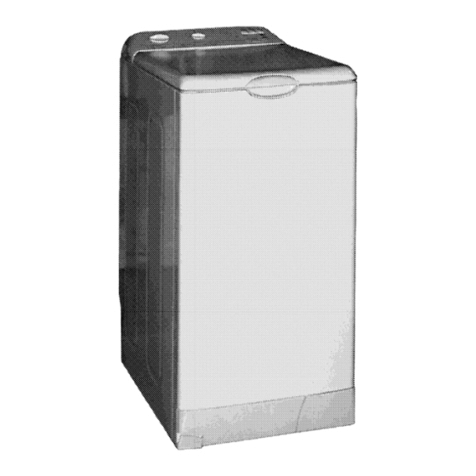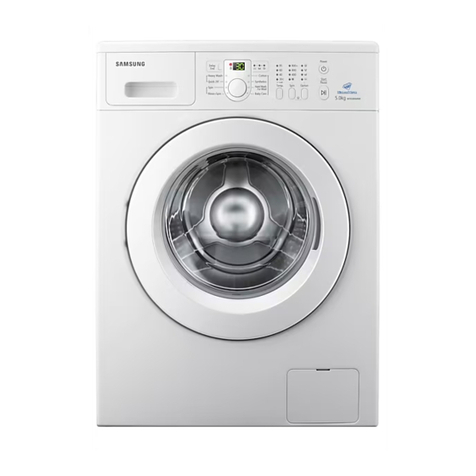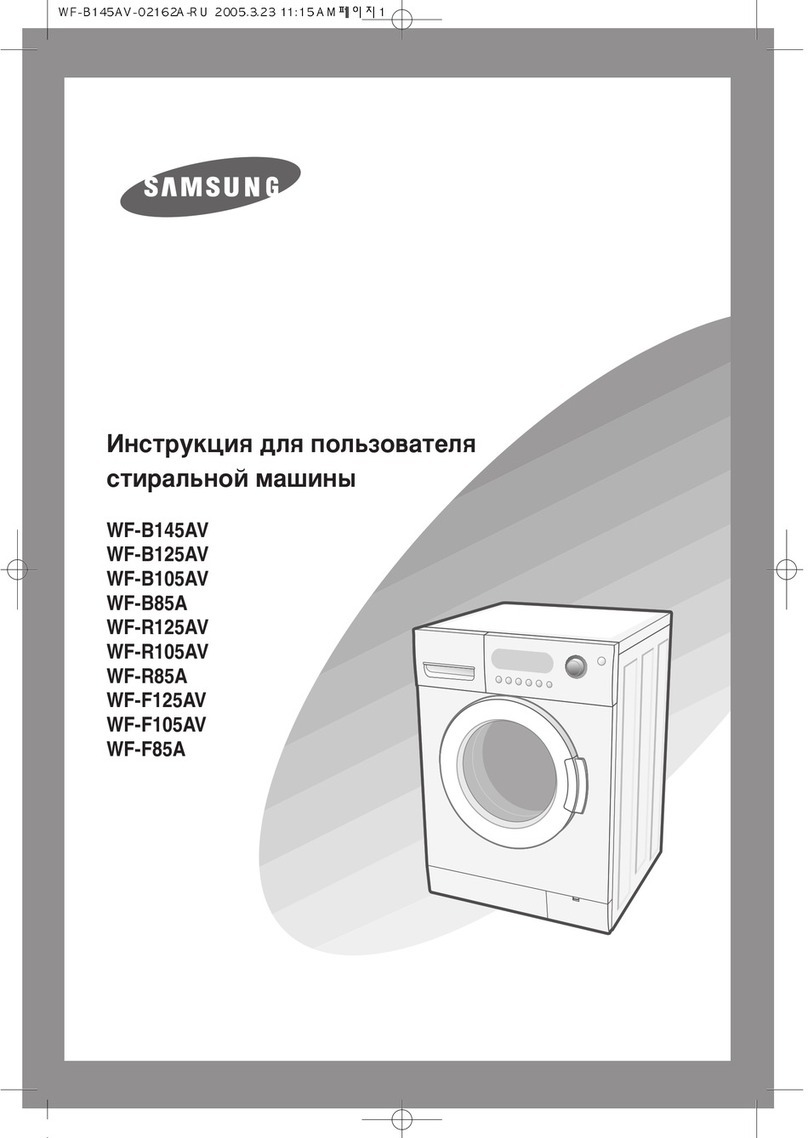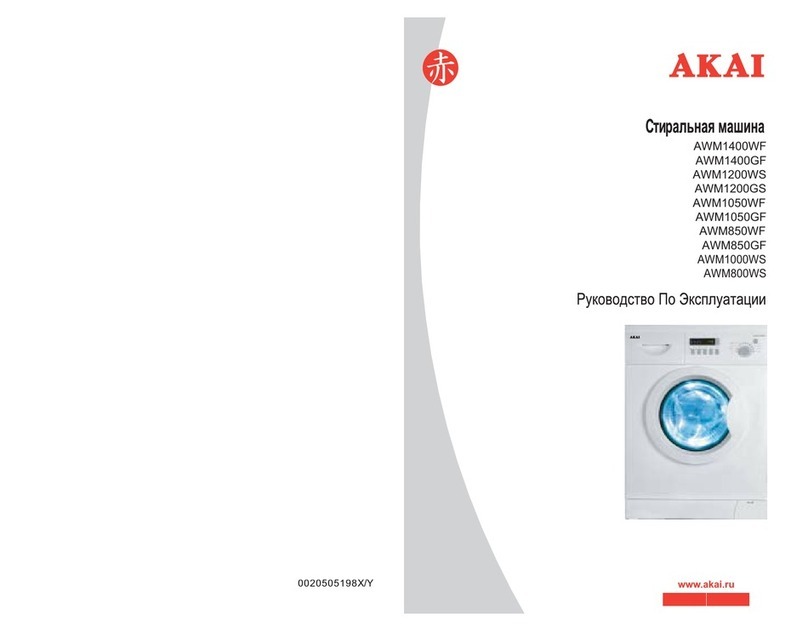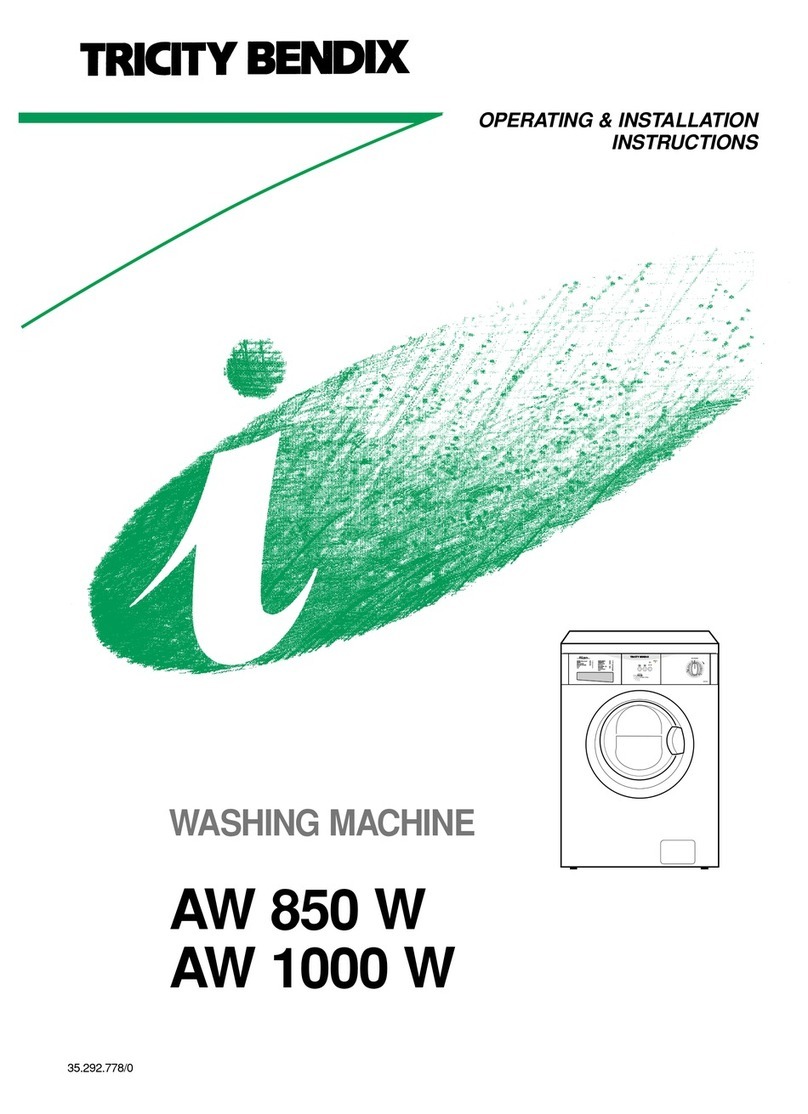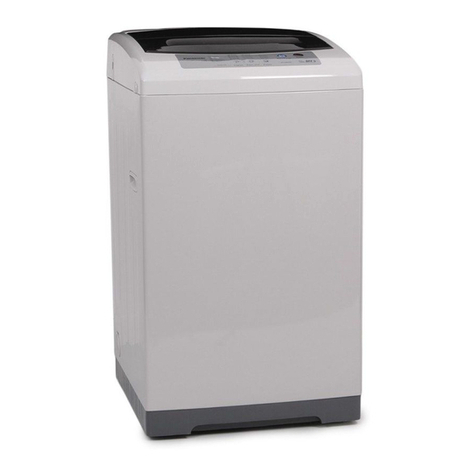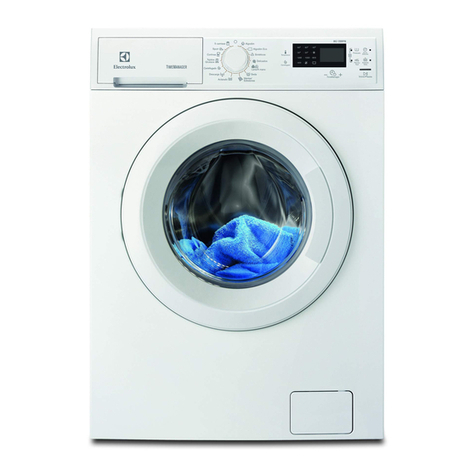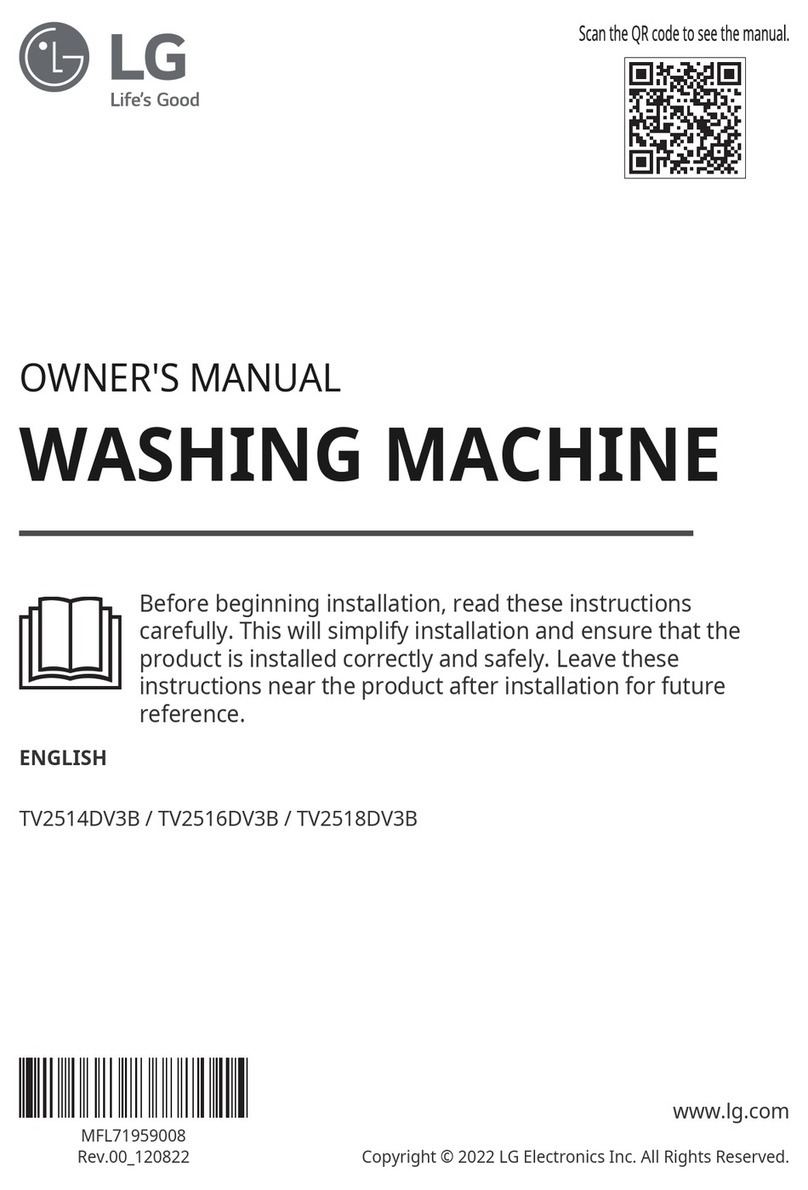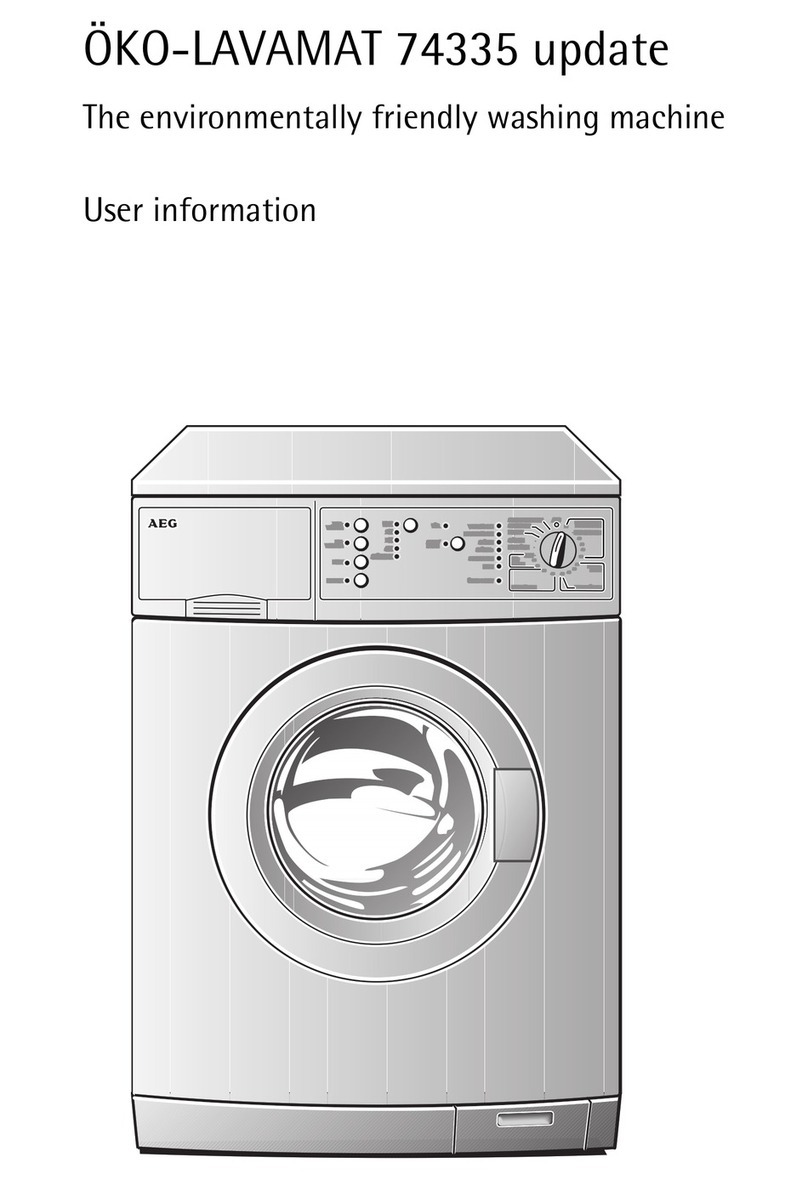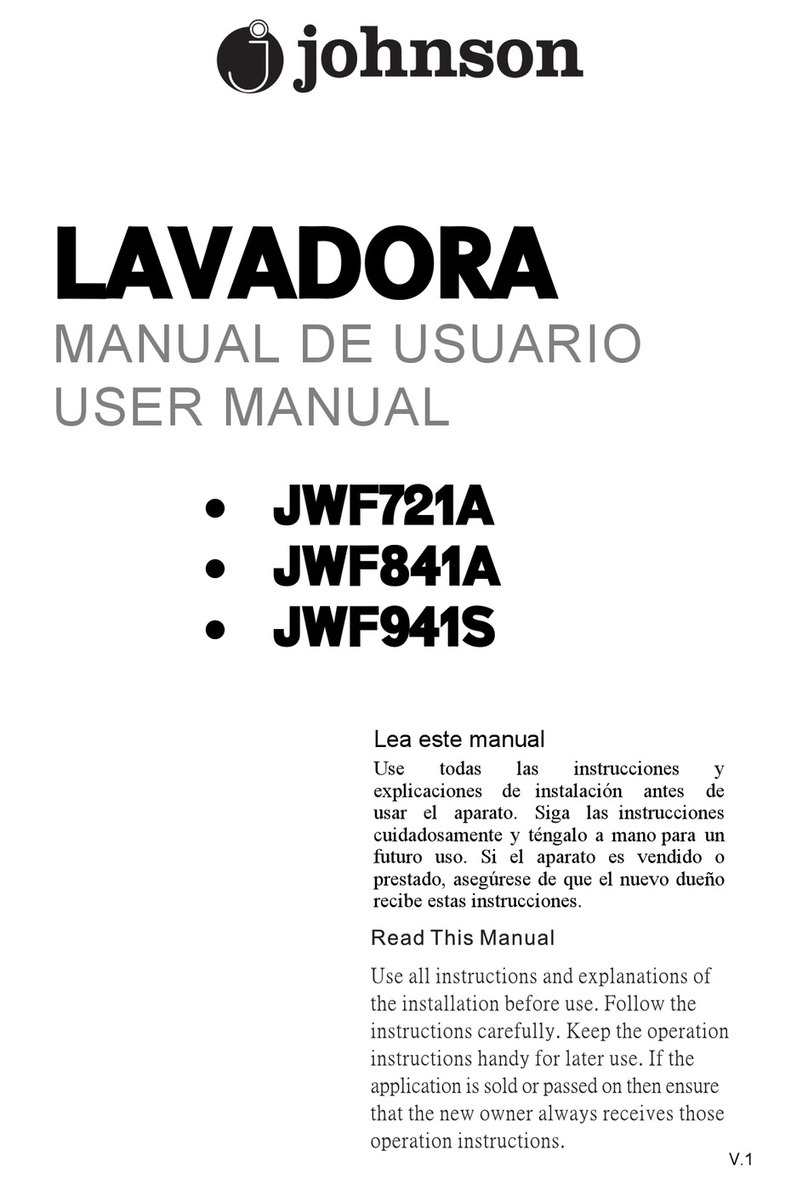
– 10 –
As water passes through the fabric, its natural
cleansing action washes away dirt without
damaging or tangling the fabric.
Infusor Wash
Following the centrifusion wash cycle, the basket
and infusor unlock. The infusor rotates to evenly
distribute the wash load while continuing to clean.
The redistribution of fabrics helps ensure that the
lint and dirt do not become trapped.
Conditioning Spin
The infusor and wash basket lock together. The
basket spins very slowly at first. This allows dirty
wash water and lint to drain through the holes in the
bottom of the basket before a higher spin begins.
When the washer senses that the excess water has
drained, the wash basket accelerates to a higher
speed.
Cyclone Spin
Spin speeds are adaptive to the fabric type that is
selected by the user. Speeds can be as slow as 500
rpm for delicates and up to 1000 rpm for heavy
items. The spin is designed to extract as much water
and detergent as possible without harming fabrics.
Anti-Suds Lock
During the spin cycle, excessive suds can cause
excessive torque on the motor. If the washer detects
this condition, it will run through the rinse, drain,
and spin cycle (up to three times) in an attempt to
eliminate the excess suds.
Out of Balance
The washer is programmed to correct out of balance
situations during spins. If the washer senses an out
of balance load, the spin is stopped and the washer
drains. The washer then refills and agitates to allow
the infusor wash cycle to redistribute the load before
starting the spin again. The washer will attempt to
rebalance the load three times before optimizing the
spin to a lower speed where balance is sustainable.
Spray Rinse
The infusor and wash basket turn at a slow speed
while fresh, clean water is added to the wash load.
The spin cycle then drains this rinse water and
prepares the wash load for a final rinse.
Final Rinse
The washer retrieves the information it gathered for
adaptive fill cycle and uses that information to refill
the washer for the final rinse. Cold water enters the
basket through the fabric softener dispenser to dilute
the softener into the basket and rinse the dispenser
clean. The wash basket fills to the optimal level and
goes into a basket wash cycle where the clothes and
fabric softener are mixed thoroughly. A final spin
finishes the cycle.
Note: All rinse cycles use cold water and the (ATC)
automatic temperature control is not used. The cold
rinse is the same temperature as the incoming cold
water supply.
After several seconds of clockwise spinning, the
basket slows down and stops. The wash water pools
back into the wash basket. The wash basket starts
spinning in the counterclockwise direction creating
the same cleaning action. The washer will change
direction (up to four times) before going to the next
cycle.
Centrifusion Wash
The locked infusor and wash basket begin a
clockwise spin (figure 1). The speed of the spin is
customized to the load type and fabric type. As the
basket spins faster, it creates a strong flow of water
under the centrifugal force (figure 2).
